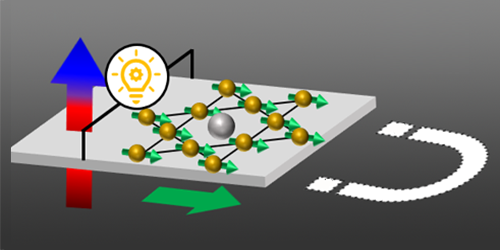Thin Films of Topological Magnets for Thermoelectric Applications
Certain ferromagnets exhibit a thermoelectric phenomenon known as the anomalous Nernst effect (ANE): they generate a voltage when simultaneously subjected to a thermal gradient and a magnetic field. Recently, researchers have demonstrated that certain “topological magnets” exhibit an ANE even in the absence of an applied magnetic field. Now Shun’ichiro Kurosawa at the University of Tokyo and colleagues have shown that a thin, crystalline film of a topological magnet, iron stannide (Fe3Sn), displays such behavior [1]. The thin film offers a promising platform for engineering heat-flux sensors and energy-harvesting devices, the researchers say.
Conventional bulk ferromagnets exhibiting the ANE typically produce voltages of less than 1 µV per kelvin-degree gradient and require an external magnetic field (1–2 tesla). Such a large field is necessary to align the material’s magnetic domains. The thin film of Fe3Sn that Kurosawa and colleagues fabricated is a crystalline magnet with a nontrivial, or topological, electronic band structure characterized by a large “Berry curvature.” This Berry curvature, which describes how an electron’s wave function “twists” as the electron propagates through the material, induces an ANE several times larger than that of conventional magnets. What’s more, the thin film possesses a so-called magnetocrystalline anisotropy, which causes the magnetization to align along a specific direction within the film plane.
Kurosawa and colleagues’ Fe3Sn thin film is shown to display a large zero-field ANE (a few µV/K, a value comparable to or exceeding those reported for bulk materials). The researchers say that the key asset of their demonstration is the use of a material composed of inexpensive elements.
–Marric Stevens
Marric Stephens is a Corresponding Editor for Physics Magazine based in Bristol, UK.
References
- S. Kurosawa et al., “Large spontaneous magneto-thermoelectric effect in epitaxial thin films of the topological kagome ferromagnet Fe3Sn,” Phys. Rev. Mater. 8, 054206 (2024).




